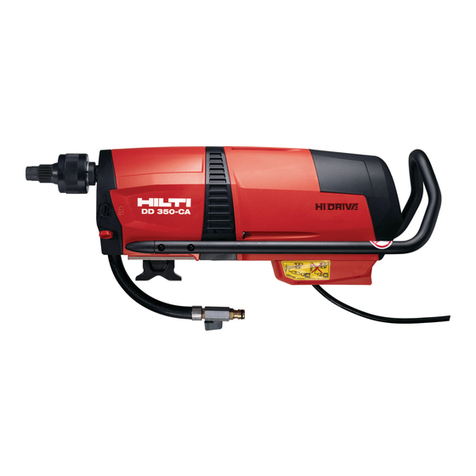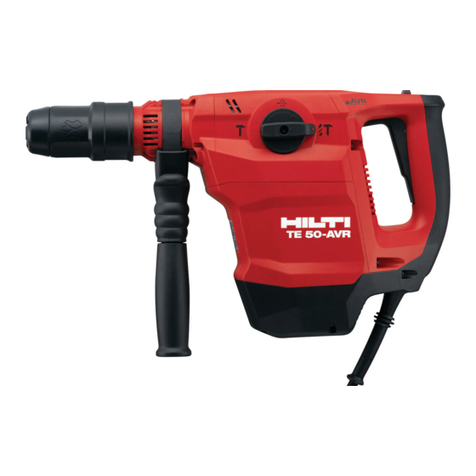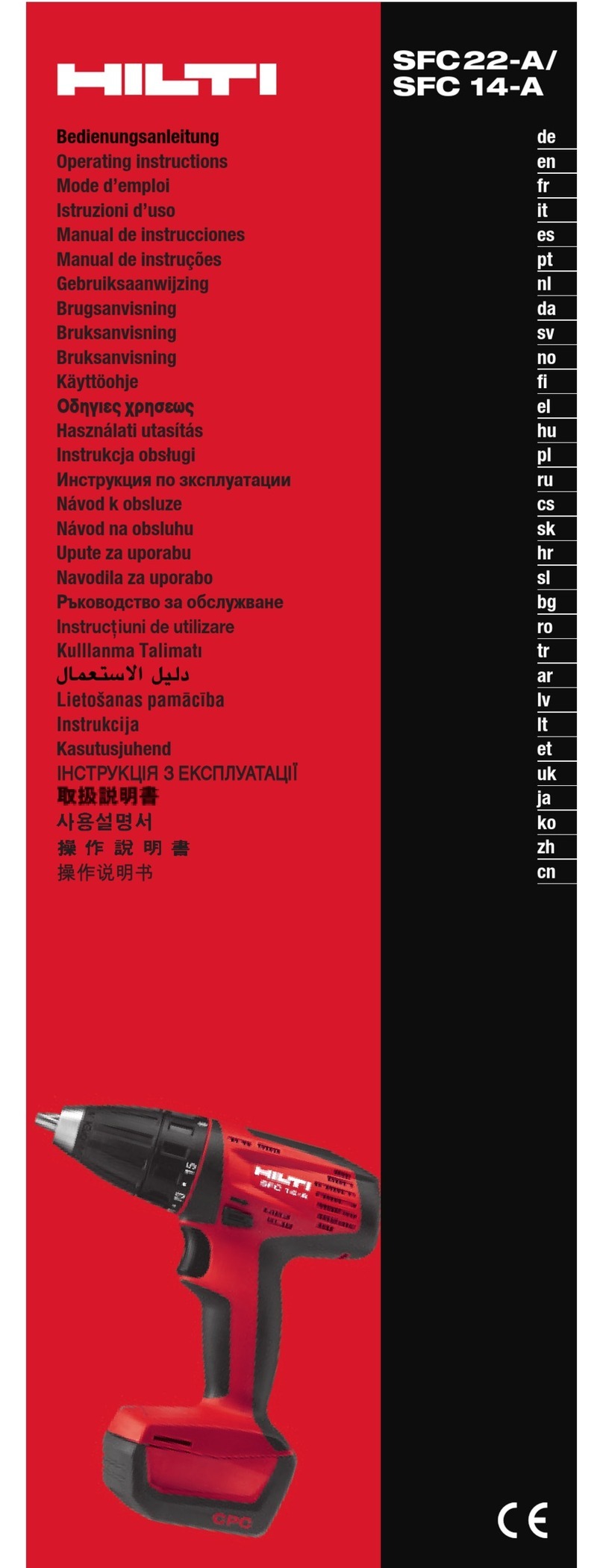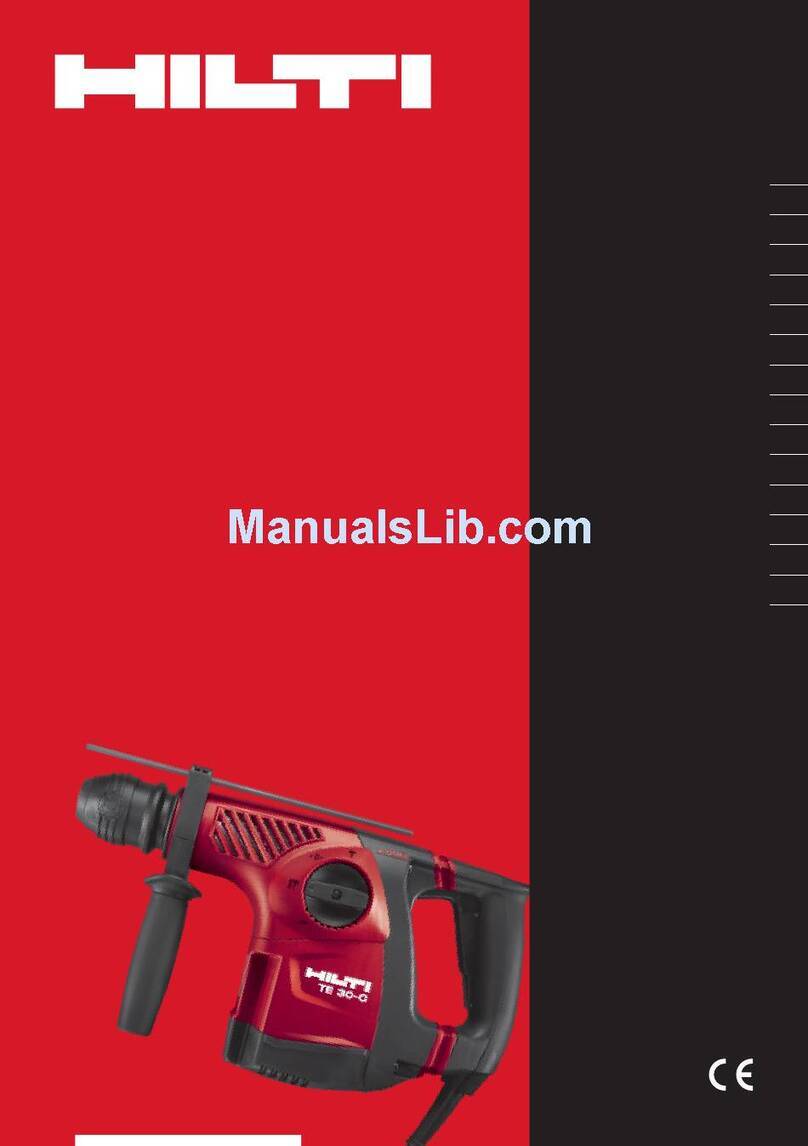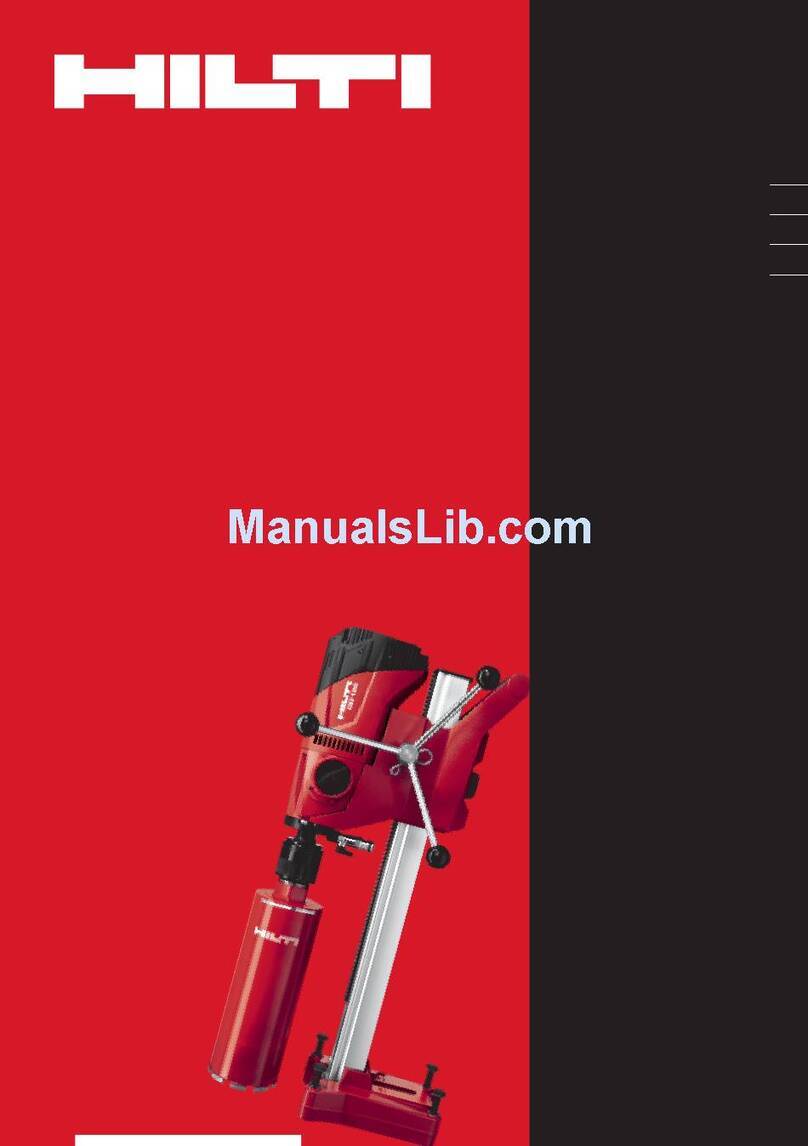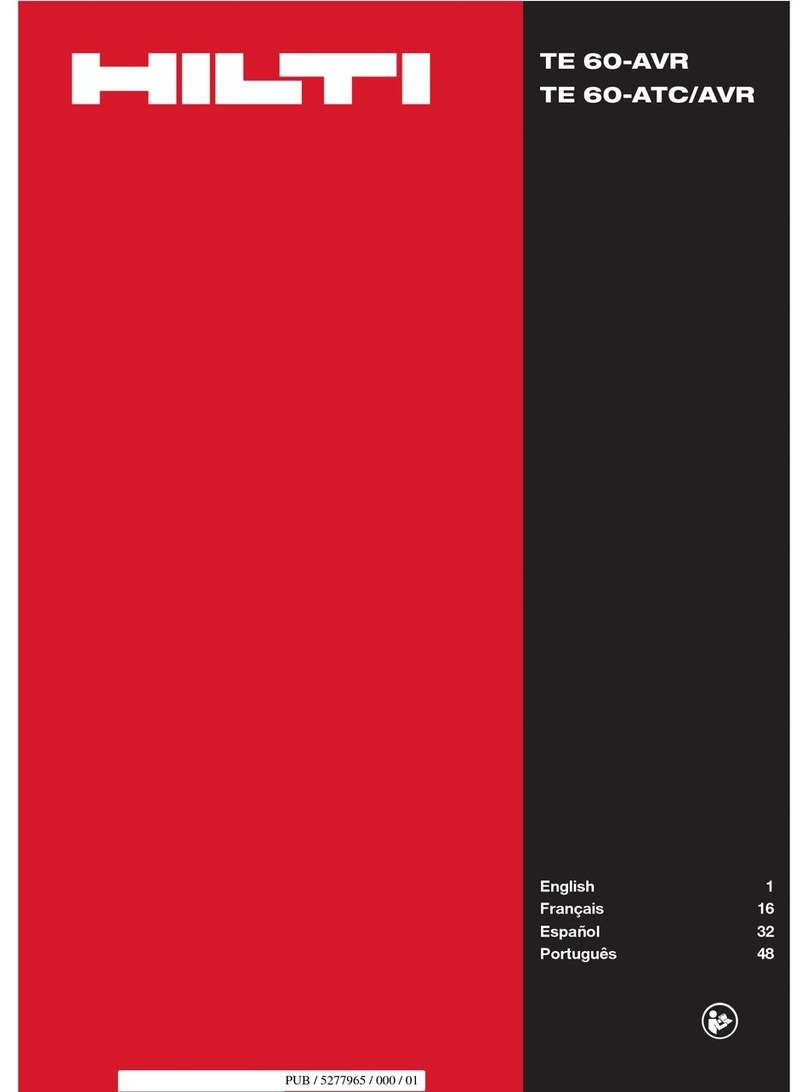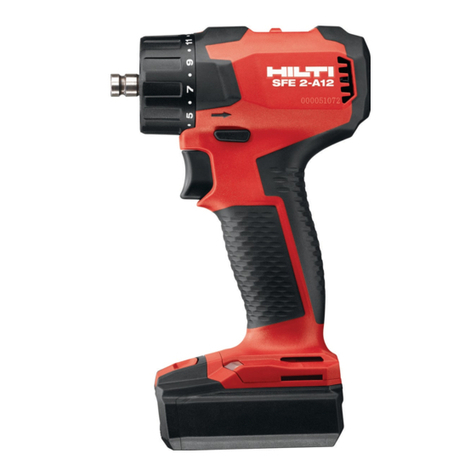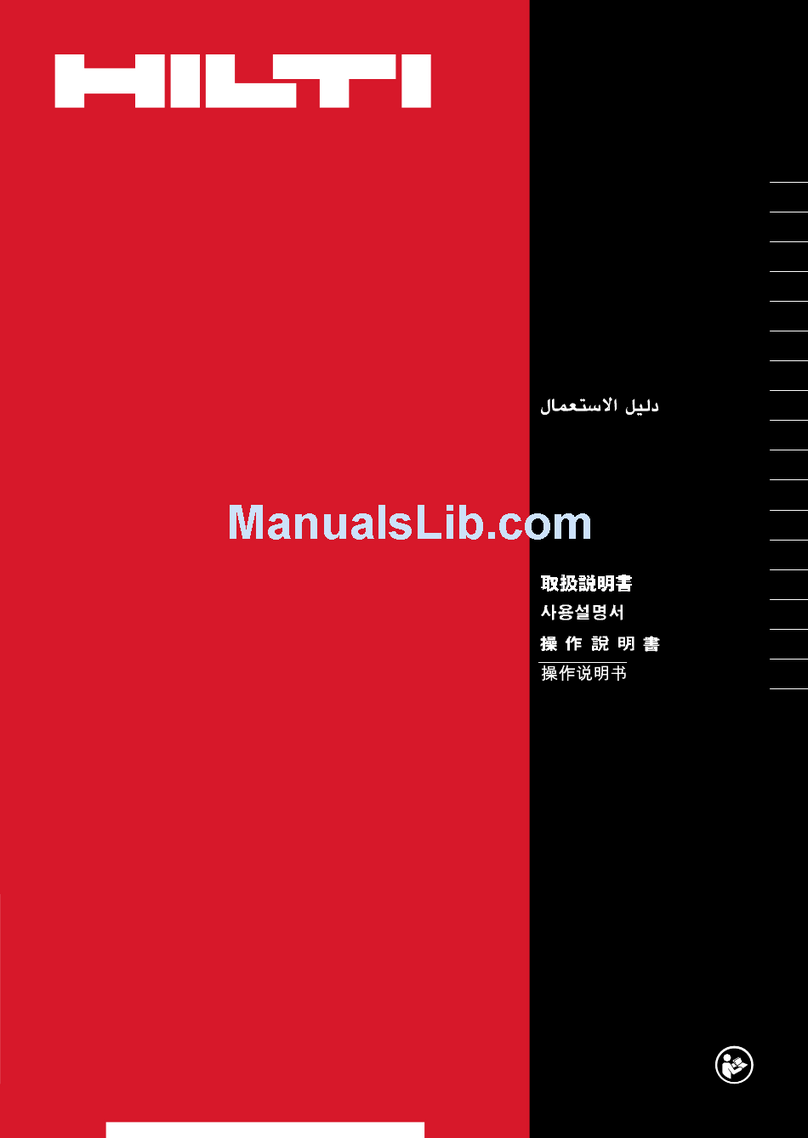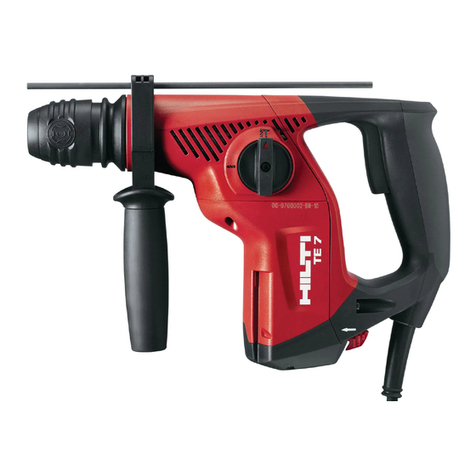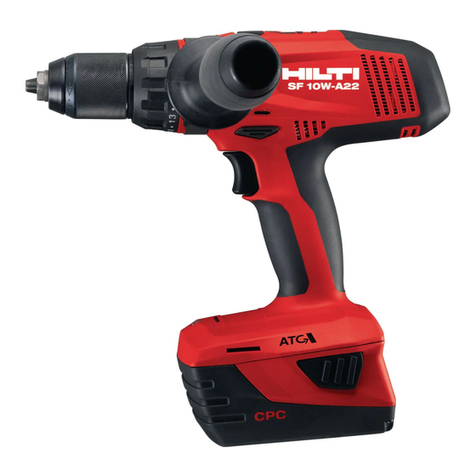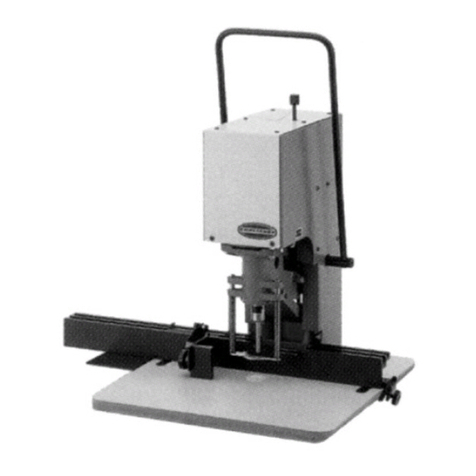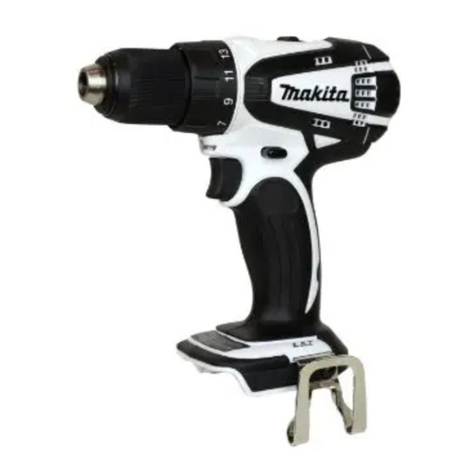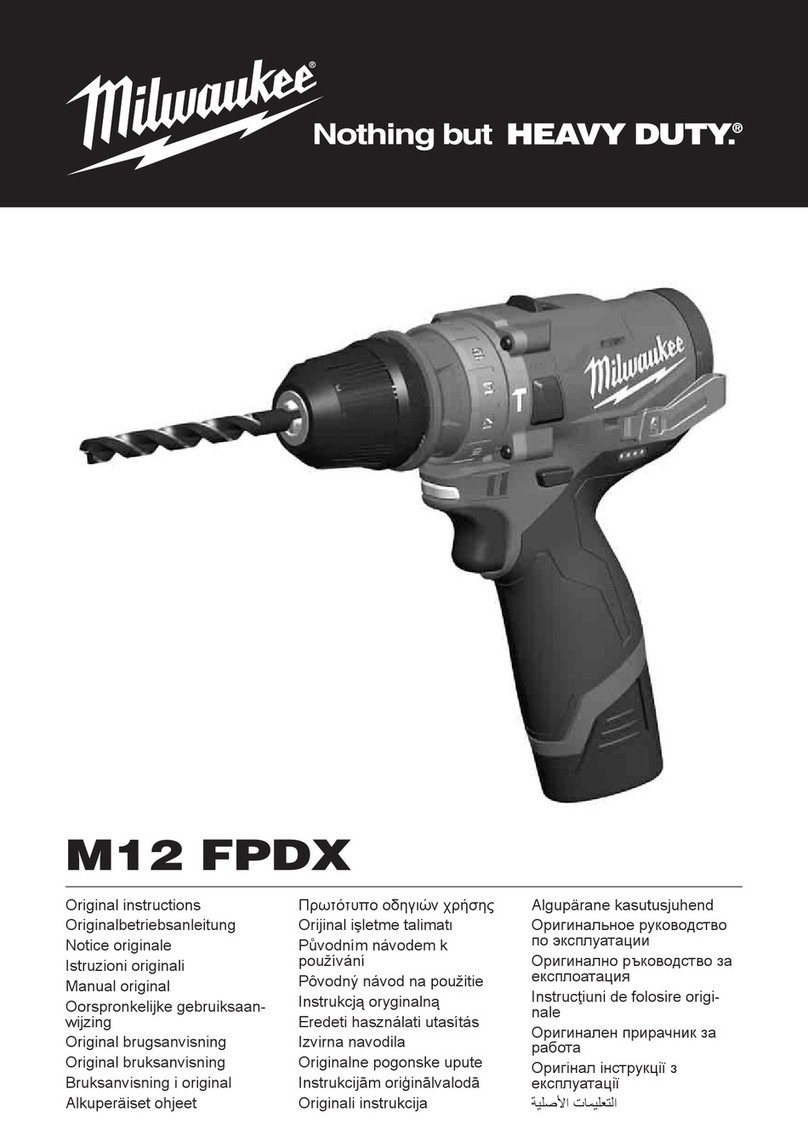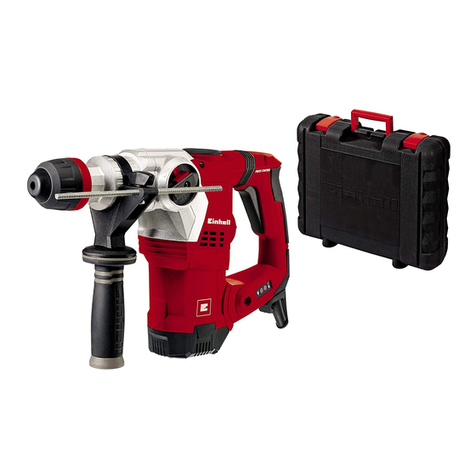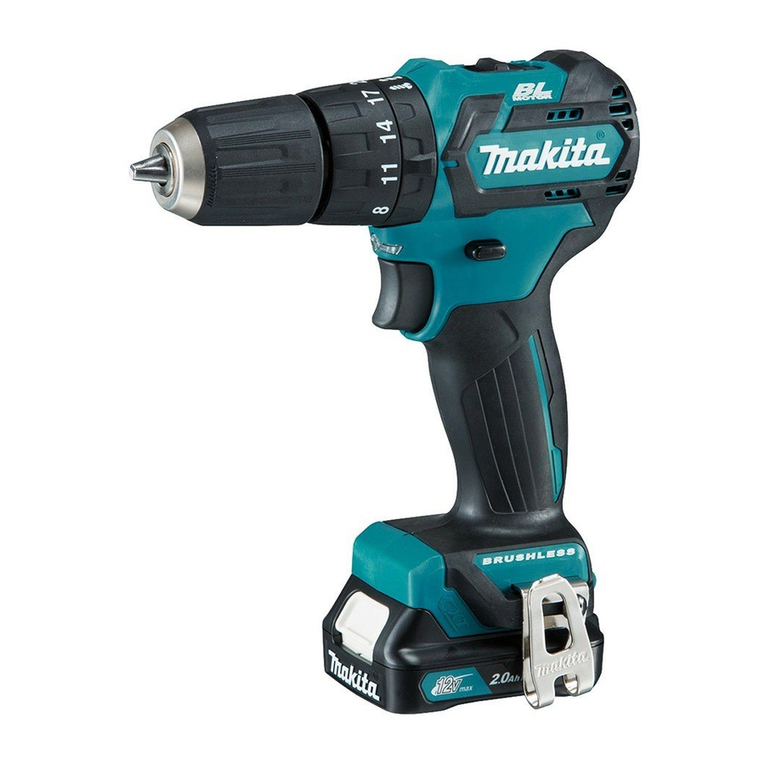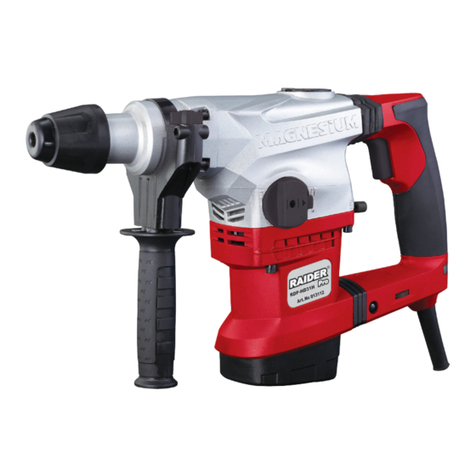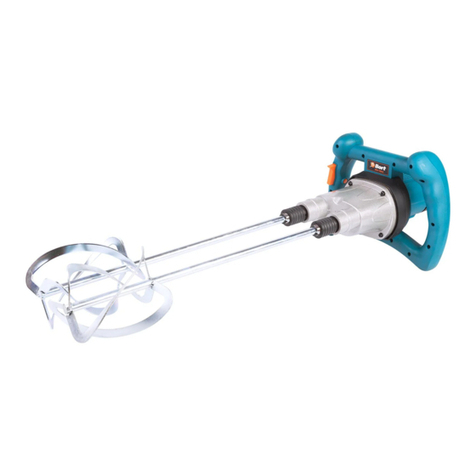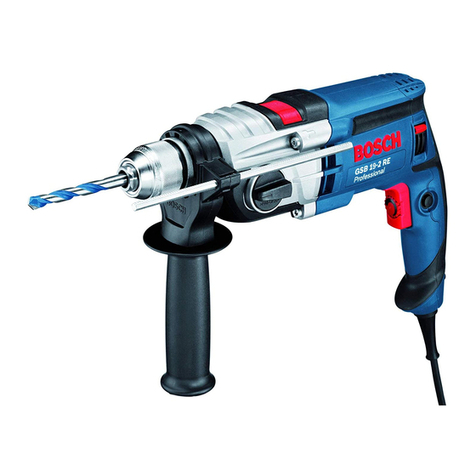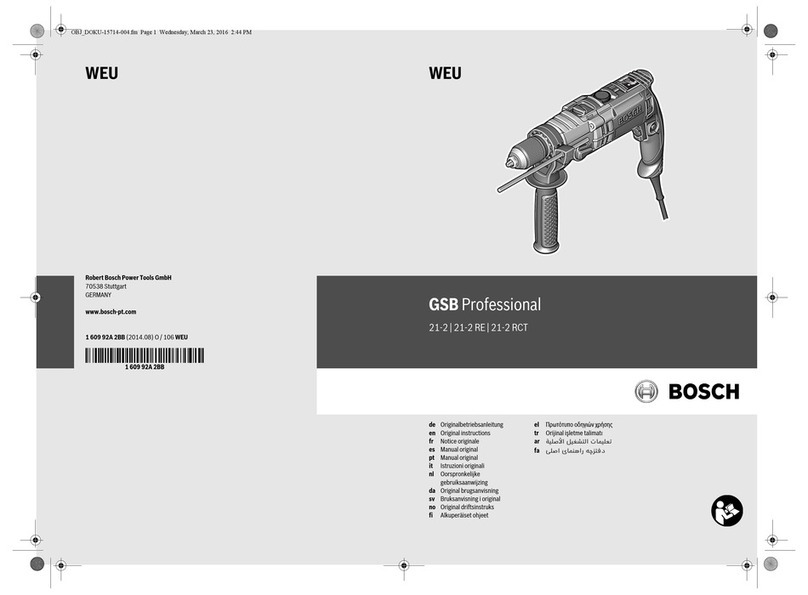sollten auch die Zeiten berücksichtigt werden, in denen das Gerät abgeschaltet ist oder zwar läuft, aber nicht
tatsächlich im Einsatz ist. Dies kann die Schwingungsbelastung über den gesamten Arbeitszeitraum deutlich
reduzieren. Legen Sie zusätzliche Sicherheitsmaßnahmen zum Schutz des Bedieners vor der Wirkung von
Schwingungen fest wie zum Beispiel: Wartung von Elektrowerkzeug und Einsatzwerkzeugen, Warmhalten der
Hände, Organisation der Arbeitsabläufe.
Geräusch- und Vibrationsinformation (gemessen nach EN 60745):
Typischer A-bewerteter Schallleistungspegel für
SFC 22ತA
80 dB (A)
Typischer A-bewerteter Schallleistungspegel für
SFC 14ತA
80 dB (A)
Typischer A-bewerteter Emissions-Schalldruckpegel
für SFC 22ತA
69 dB (A)
Typischer A-bewerteter Emissions-Schalldruckpegel
für SFC 14ತA
69 dB (A)
Unsicherheit für die genannten Schallpegel 3 dB (A)
Triaxiale Vibrationswerte (Vibrations-Vektorsumme) gemessen nach EN 60745ತ2ತ2
Für SFC 22ತA: Schrauben ohne Schlag, a
h
1 m/st
Für SFC 14ತA: Schrauben ohne Schlag, a
h
1 m/st
Unsicherheit (K) 1,5 m/st
Triaxiale Vibrationswerte (Vibrations-Vektorsumme) gemessen nach EN 60745ತ2ತ1
Für SFC 22ತA: Bohren in Metall, a
h,D
2,0 m/st
Für SFC 14ತA: Bohren in Metall, a
h,D
2,0 m/st
Unsicherheit (K) für triaxiale Vibrationsmessungen 1,5 m/st
Akku-Pack B14/1.6 B14/3.3 B22/1.6 B22/2.6
Bemessungsspan-
nung 14,4 V 14,4 V 21,6 V 21,6 V
Kapazität 1,6 Ah 3,3 Ah 1,6 Ah 2,6 Ah
Energie Inhalt 23,04 Wh 47,52 Wh 34,56 Wh 56,16 Wh
Gewicht 0,36 kg 0,60 kg 0,48 kg 0,78 kg
Temperaturüber-
wachung ja ja ja ja
Zellenart LithiumತIonen LithiumತIonen LithiumತIonen LithiumತIonen
Zellenblock 4 Stück 8 Stück 6 Stück 12 Stück
5. Sicherheitshinweise
HINWEIS
Die Sicherheitshinweise in Kapitel 5.1 beinhalten
alle allgemeinen Sicherheitshinweise für Elektrowerk-
zeuge, die gemäß den anwendbaren Normen in der
Bedienungsanleitung aufzuführen sind. Es können
demnach Hinweise enthalten sein, die für dieses Ge-
rät nicht relevant sind.
5.1 Allgemeine Sicherheitshinweise für
Elektrowerkzeuge
a) WARNUNG
Lesen Sie alle Sicherheitshinweise und Anwei-
sungen. Versäumnisse bei der Einhaltung der Si-
cherheitshinweise und Anweisungen können elek-
trischen Schlag, Brand und/oder schwere Verlet-
zungen verursachen. Bewahren Sie alle Sicher-
heitshinweise und Anweisungen für die Zukunft
auf. Der in den Sicherheitshinweisen verwendete
Begriff "Elektrowerkzeug" bezieht sich auf netz-
betriebene Elektrowerkzeuge (mit Netzkabel) und
auf akkubetriebene Elektrowerkzeuge (ohne Netz-
kabel).
5.1.1 Arbeitsplatzsicherheit
a) Halten Sie Ihren Arbeitsbereich sauber und gut
beleuchtet. Unordnung oder unbeleuchtete Ar-
beitsbereiche können zu Unfällen führen.
b) Arbeiten Sie mit dem Elektrowerkzeug nicht in
explosionsgefährdeter Umgebung, in der sich
brennbare Flüssigkeiten, Gase oder Stäube be-
finden. Elektrowerkzeuge erzeugen Funken, die
den Staub oder die Dämpfe entzünden können.
c) Halten Sie Kinder und andere Personen während
der Benutzung des Elektrowerkzeugs fern. Bei
Ablenkung können Sie die Kontrolle über das
Gerät verlieren.
5.1.2 Elektrische Sicherheit
a) Der Anschlussstecker des Elektrowerkzeuges
muss in die Steckdose passen. Der Stecker
darf in keiner Weise verändert werden. Ver-
wenden Sie keine Adapterstecker gemeinsam
mit schutzgeerdeten Elektrowerkzeugen. Unver-
änderte Stecker und passende Steckdosen verrin-
gern das Risiko eines elektrischen Schlages.
b) Vermeiden Sie Körperkontakt mit geerdeten
Oberflächen wie von Rohren, Heizungen, Her-
den und Kühlschränken. Es besteht ein erhöhtes
Risiko durch elektrischen Schlag, wenn Ihr Körper
geerdet ist.
c) Halten Sie Elektrowerkzeuge von Regen oder
Nässe fern. Das Eindringen von Wasser in ein
Elektrowerkzeug erhöht das Risiko eines elektri-
schen Schlages.
d) Zweckentfremden Sie das Kabel nicht, um das
Elektrowerkzeug zu tragen, aufzuhängen oder
um den Stecker aus der Steckdose zu ziehen.
Halten Sie das Kabel fern von Hitze, Öl, schar-
fen Kanten oder sich bewegenden Geräteteilen.
Beschädigte oder verwickelte Kabel erhöhen das
Risiko eines elektrischen Schlages.
e) Wenn Sie mit einem Elektrowerkzeug im Freien
arbeiten, verwenden Sie nur Verlängerungska-
bel, die auch für den Aussenbereich geeignet
sind. Die Anwendung eines für den Aussenbe-
reich geeigneten Verlängerungskabels verringert
das Risiko eines elektrischen Schlages.
f) Wenn der Betrieb des Elektrowerkzeuges in
feuchter Umgebung nicht vermeidbar ist, ver-
wenden Sie einen Fehlerstromschutzschalter.
Der Einsatz eines Fehlerstromschutzschalters ver-
mindert das Risiko eines elektrischen Schlages.
5.1.3 Sicherheit von Personen
a) Seien Sie aufmerksam, achten Sie darauf, was
Sie tun, und gehen Sie mit Vernunft an die Ar-
beit mit einem Elektrowerkzeug. Benutzen Sie
kein Elektrowerkzeug, wenn Sie müde sind oder
unter dem Einfluss von Drogen, Alkohol oder
Medikamenten stehen. Ein Moment der Unacht-
samkeit beim Gebrauch des Elektrowerkzeuges
kann zu ernsthaften Verletzungen führen.
b) Tragen Sie persönliche Schutzausrüstung und
immer eine Schutzbrille. Das Tragen persönli-
cher Schutzausrüstung, wie Staubmaske, rutsch-
feste Sicherheitsschuhe, Schutzhelm oder Gehör-
schutz, je nach Art und Einsatz des Elektrowerk-
zeuges, verringert das Risiko von Verletzungen.
c) Vermeiden Sie eine unbeabsichtigte Inbetrieb-
nahme. Vergewissern Sie sich, dass das Elek-
trowerkzeug ausgeschaltet ist, bevor Sie es an
die Stromversorgung und/oder den Akku ansch-
liessen, es aufnehmen oder tragen. Wenn Sie
beim Tragen des Elektrowerkzeuges den Finger
am Schalter haben oder das Gerät eingeschaltet
an die Stromversorgung anschliessen, kann dies
zu Unfällen führen.
d) Entfernen Sie Einstellwerkzeuge oder Schrau-
benschlüssel, bevor Sie das Elektrowerkzeug
einschalten. Ein Werkzeug oder Schlüssel, der
sich in einem drehenden Geräteteil befindet, kann
zu Verletzungen führen.
e) Vermeiden Sie eine abnormale Körperhaltung.
Sorgen Sie für einen sicheren Stand und hal-
ten Sie jederzeit das Gleichgewicht. Dadurch
können Sie das Elektrowerkzeug in unerwarteten
Situationen besser kontrollieren.
f) Tragen Sie geeignete Kleidung. Tragen Sie
keine weite Kleidung oder Schmuck. Halten Sie
Haare, Kleidung und Handschuhe fern von sich
bewegenden Teilen. Lockere Kleidung, Schmuck
oder lange Haare können von sich bewegenden
Teilen erfasst werden.
g) Wenn Staubabsaug- und -auffangeinrichtungen
montiert werden können, vergewissern Sie
sich, dass diese angeschlossen sind und


